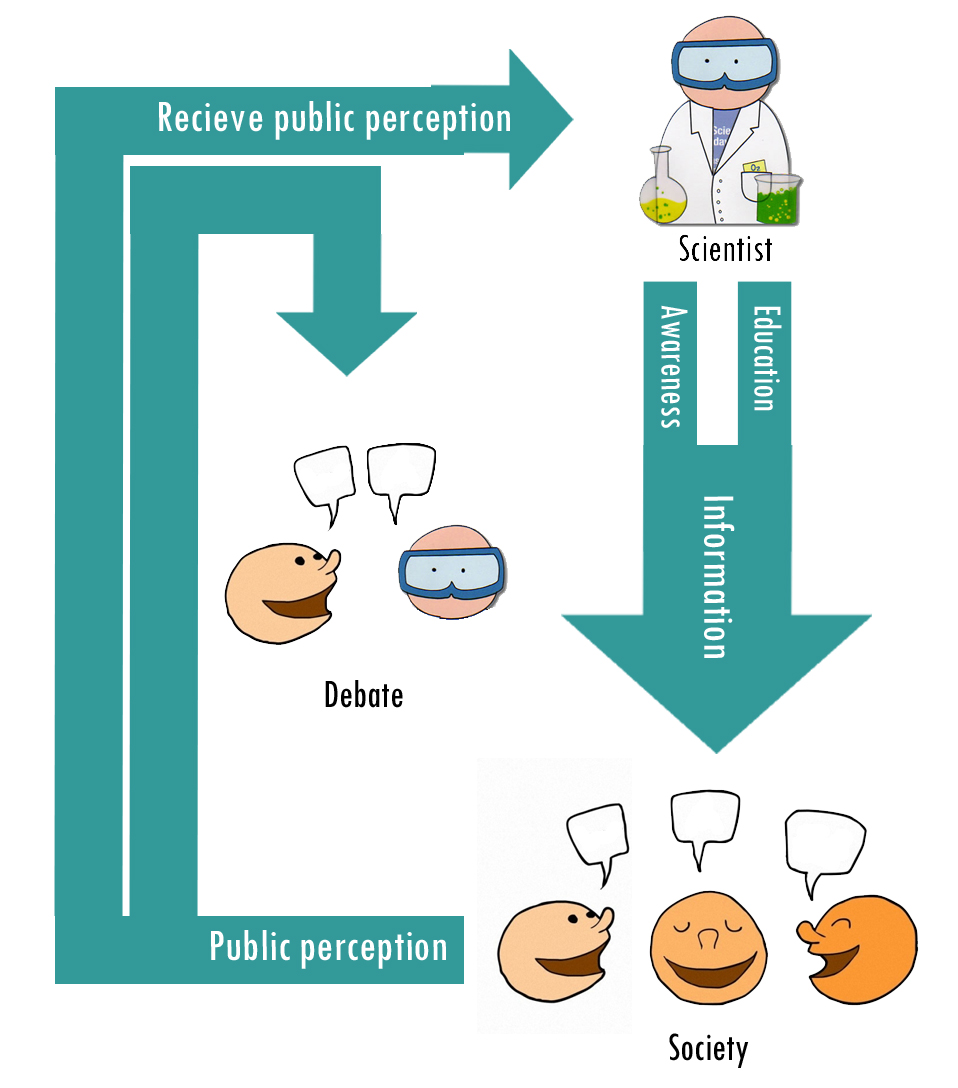Team:TU Delft/EPAC
From 2010.igem.org
The EPAC Pyramid
Introduction
When new technologies are presented to society, responses of the public are hard to predict. In the case of synthetic biology numerous questions rise about safety, security and ethics. Also issues like patenting versus open-source models are a topic of debate. During our iGEM project we tried to analyze, assess and improve the relationship between society and synthetic biology.
With our new approach, our team hopes to improve the way in which synthetic biology meets the expectations and needs of society.
Inspiration
For our Human Practice project we got inspired by a 2-year European Project called SYNBIOSAFE (1). SYNBIOSAFE was the first project in Europe to research the safety and ethical aspects of synthetic biology, aiming to proactively stimulate a debate on the following issues: safety, security, ethics and the boundary between science and society.
Based on this project, we developed a complete new approach to human practice: The EPAC pyramid. Our model consists out of four elements: Education, Perception, Awareness & Collaboration. These fundamentals formed the basis for organizing our activities. Because these elements are strongly related to each other we linked them together: the pyramid was born.
EPAC
Using our unique and holistic EPAC approach, we could really focus on the different disciplinaries involving human practice and help society to consider, guide and address the impacts of ongoing advances in synthetic biology.
This is how it works
Working with the model makes it important to first distinguish two information streams. Information can be received and distributed (figure 1).

In our point of view we are at the interface between science and society. We can receive from and spread information to both sides.
By providing information we aim to make people aware or more educated in the field of synthetic biology.
The direct consequence of processing this information leads to the formation of perception. These opinions are not only based on the newly absorbed information, but also on norms, values, upbringing and education of the recipient.
Therefore it is imposible to look at education, perception and awareness as separate element. There is a continuous exchange between these streams of communication.
We used the principle of the adressing two of this three elements in all of our activities and thereby maintaining the connection between the elements.
The C in EPAC
The C in EPAC comes from collaboration. Without cooperation, all of the above is not possible.
Click on the icons on the EPAC-pyramid to check our human practice activities.
References
- Ganguli-Mitra, A., M. Schmidt, et al. (2009). Of Newtons and heretics. Nat Biotechnol 27(4): 321-322.
- Schmidt, M., A. Ganguli-Mitra, et al. (2009). A priority paper for the societal and ethical aspects of synthetic biology. Syst Synth Biol 3(1-4): 3-7.
- Schmidt, M., H. Torgersen, et al. (2008). SYNBIOSAFE e-conference: online community discussion on the societal aspects of synthetic biology. Syst Synth Biol 2(1-2): 7-17.
 "
"
